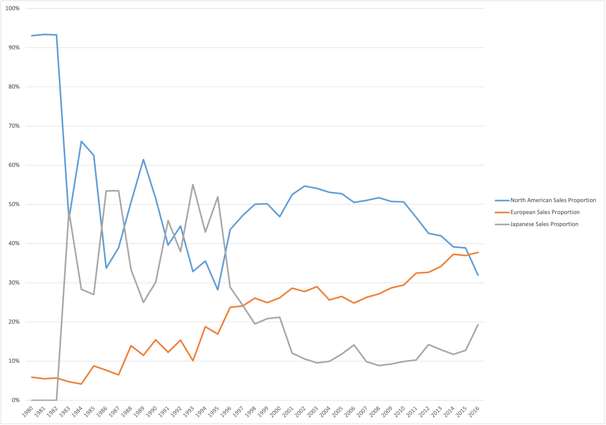GameCo: Video Game Sales Analysis
Challenge
Background: The video game company GameCo seeks to enhance its market competitiveness by leveraging data-driven insights on competitors, market dynamics, and sales trends to optimize resource allocation for developing new games.
Objective: Conduct a descriptive analysis of a video game dataset to inform GameCo's game development strategy, focusing on game popularity, competitors, trends, and regional sales variations. Stakeholders are the Marketing and Sales divisions.






Grouping data
Summarizing data
Descriptive analysis
Visualizing results
Presenting results
Excel
Powerpoint
Skills
Tools
Data
GameCo: Sales
Key Question: How have market share varied between geographic regions over time?
Steps Taken: For this I generated a pivot table (right). Data points show that
Japanese and North American market share varied wildly until late 1997, when the latter became the dominant market
European market share has been consistently growing, becoming the largest in 2016




Conclusion: In market share, Europe is the primary market for GameCo’s investments, growing consistently since 1980 and is now the largest (at 38%). This investment should come at the expense of North America, on a consistent downtrend since 2008 (52% then, 32% now).


GameCo: Marketing
Key Question: Are certain types of games more popular than others?
Steps Taken: Here I used a 100% stacked bar chart to get an overview of the genres by market (left). To simplify for the audience, and account for outliers and the most recent data, I used pivot tables to limit the results to 2016 and used bar charts to make recommendations.


Conclusion: In Europe, as the most important market, publish Action (1.99m units sold), Shooter (0.71m) and Sports (0.67m) games. These are the strongest categories even when excluding statistical outliers.
GameCo should evaluate its capability to compete with major franchises in these genres.


